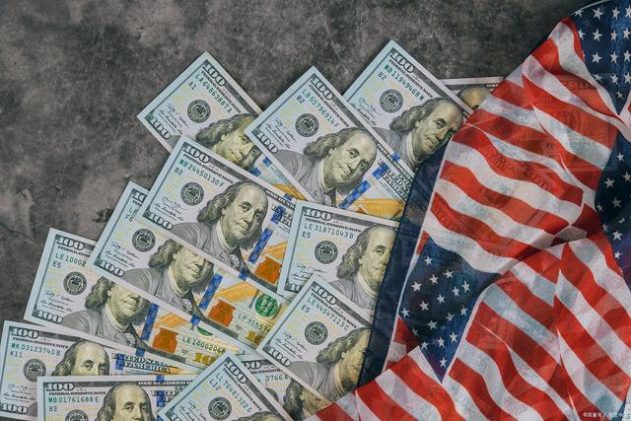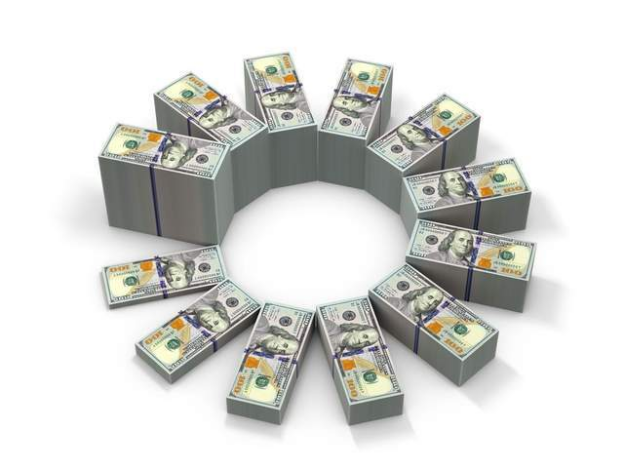
The recent surge in bond yields has reignited concerns in financial markets, where the 10-year yield in the US Treasury market, the bedrock of the global financial system, has surged to a 16-year high. In Germany, the figure reached its highest level since the eurozone debt crisis in 2011. Even in Japan, where official interest rates are still below 0%, bond yields are back to where they were in 2013.
Bond yields determine governments' funding costs, so the longer they stay high, the greater their impact on the interest costs countries pay.
Goldman Sachs predicts that the U.S. debt burden is now on track to surpass the last peak reached in the 1990s and set a new record by 2025. In 2022, the government's expense to pay interest on its debt will be $476 billion, or about 2 percent of the nation's GDP. Strategists estimate that interest payments will increase to 3 percent of GDP by 2024 and 4 percent of GDP by 2030.
Interest payments are also expected to be the largest category of federal spending over the next 10 years, with a total of $10.6 trillion expected to be spent on interest payments on the national debt over the next 10 years, according to the Authoritative Foundation's analysis

In addition, budget models recently determined by the Wharton School of the University of Pennsylvania (PWBM) show that the US has about 20 years to change the size of its debt, or some form of default will be inevitable. The 20-year timeline is actually optimistic because it includes future fiscal policies to stabilize debt. Currently, tests have found that US debt cannot exceed 200% of GDP if the worst-case scenario is to be avoided. At present, it is about 98 per cent.
Of course, the remote risk is extreme, but the near-end threat persists and gradually increases, the reason is simple, high bond yields, high interest rates, high borrowing costs, the biggest harm is nothing but the enterprise.
The average annual interest cost of borrowing $1 billion in the U.S. senior bond market has climbed to $62.7 million from $17.4 million at the end of 2020. Since the first rate hike in early 2022, companies with investment-grade credit ratings have added more than $5 trillion in net debt. More than 150 companies with debts of at least $50 million have filed for bankruptcy this year.
Although the latest forecast of the IMF has increased the growth of the US GDP this year, the hidden danger has been buried in the market, it seems that the economy is good, corporate profits are high, and various positive data are out, but the probability and degree of the future outbreak of a major crisis has doubled.

Borrowed money is to be paid back, first there is the risk of government debt, down to enterprises, and then to the people, the debt economy of the United States will usher in a historic test, and to be honest, the difficulty is very high, there is bound to be a great recession within 20 years, no less than the Great Depression of the last century. The most important problem is that the issuance of debt now seems to have become a habit of wealth sources, and the hands and feet are getting bigger and bigger, perhaps 100 billion is enough, and 200 billion must be issued.
As a result, one of the priorities of the party and government in the United States now is government spending, the contradiction is getting bigger and bigger, and it is impossible to escape under various superpositions. According to past experience, the United States will wage war to solve internal problems, but the world has changed, so swallowing the bitter fruits has become inevitable.

The European Commission released a package of measures for the automotive industry on Tuesday (December 16th), proposing to relax the requirements related to the "ban on the sale of fuel vehicles" by 2035.
The European Commission released a package of measures for …
Venezuela's Vice President and Oil Minister Rodriguez said …
On December 16 local time, the Ministry of Space Science Ex…
Recently, a highly anticipated phone call between the defen…
Right now, the world's major central banks are standing at …
Recently, according to Xinhua News Agency, the news of a tr…